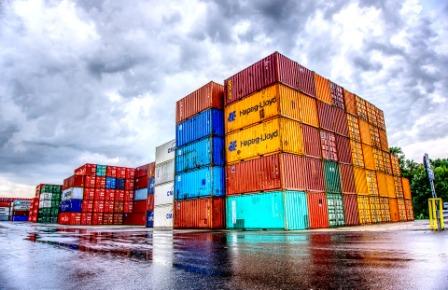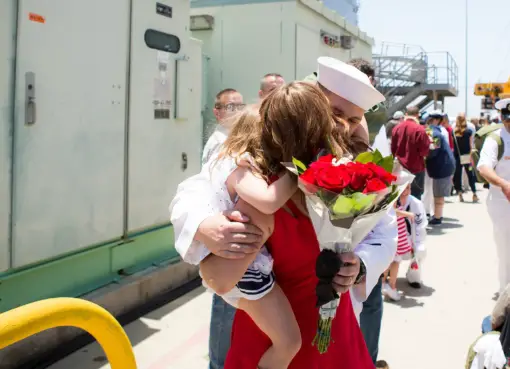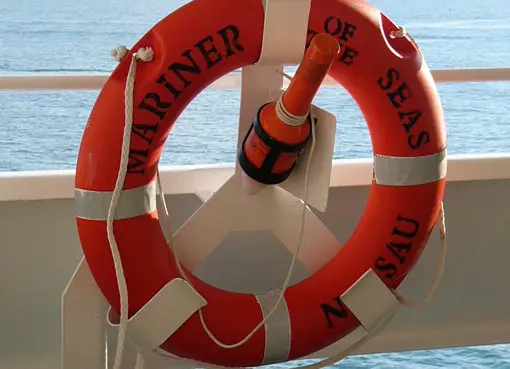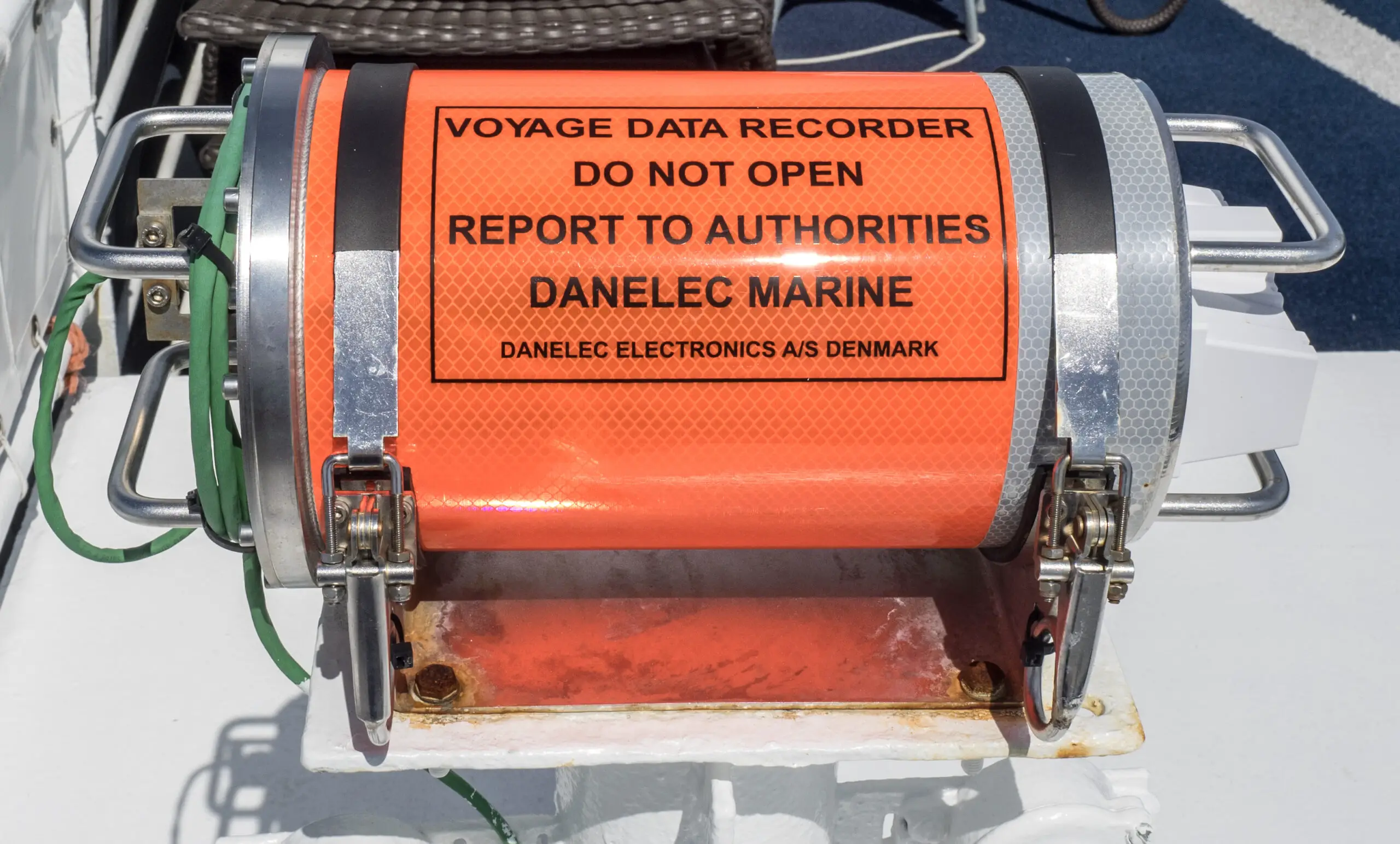Containerisation: This is a practice of grouping loads of cargo together in standard size steel boxes known as containers. This method is aimed at minimizing the physical handling of individual cargo loads, both on the ship and onshore.
Container traffic began entering deep-sea trade in the mid-1960s and today is one of the most popular modes of transportation of packaged goods. Soon after the introduction of container transportation, major trades between developed countries became fully containerized thereby reducing the need for breakbulk ship.
Some of the advantages of containerization are:
- Reduced ship time in port.
- Better berth utilization.
- Improved trans-shipment and inter-modal operations.
- The reduced time gap between producer and consumer.
- Less physical handling of cargo – less damage.
- Good security – less pilferage.
- Protection against weather and detrimental atmosphere.
- Easier temperature and humidity control to improve the shelf life of perishables.
- Improved safety to personnel, cargo, and equipment.
- Reduced tallying costs.
- Cargo conveyed from door to door by multi-modal means of transport.
- Easier to segregate various types of cargoes in the same ship.
Types of containers:
Over a period of years, container traffic has evolved into one of the major transport means of modern days. Various types of containers have been introduced to suit various needs.
To have uniformity for the convenience of transportation, I.S.O (International Standards Organization) has regulated the size and cargo capacity of containers.
Most common these days are the TEU (Twenty Equivalent Units) and FEU (Forty Equivalent unit) containers having dimensions of 20′ x 8′ x 8’6″ (LxBxH) and 40′ x 8′ x 8’6″ respectively with cargo carrying capacities of 20 tonnes and 40 tonnes respectively. Although there are containers that are 24 feet and 30 feet – these are not common in international trade. In the US 45 feet containers have also recently been introduced.
Some of the classes of containers are described here:
Standard or general purpose or dry box containers: This type of container usually has doors at one end only, has a relatively low tare weight, relatively low capital cost, and can carry a wide variety of commodities. Tare refers to the weight of the empty container.
Open top containers: These containers have either a canvas-covered roof or rigid removable roof for weather protection. These containers are used for very heavy cargoes, which can be loaded only from the top. They are also used to stow some tall cargoes (cargoes taller than 8’6″), where the cargo protrudes out from the top. This container, of necessity, will have to be stowed on top of the stack.
Half-height containers: This is the open-top container and caters to a carriage of high-density cargoes like iron ingots – where the volume required is small. The height of the container is 4 feet, the rest dimensions being the same. These are not very commonly found since these high-density cargoes can be loaded in boxes and carried on platform type of containers which resembles the floor of a standard ISO container.
High cube containers: This is like a standard container but has a height of 9′ 06″. It is very popular in the US trade.
Flat rack containers: This has no roof or sides and often the end can be folded down to save storage space when they are empty. They cater for heavy, awkward and oversized loads, for example, locomotives, boats, and generators.
Dry bulk containers: These resemble the general-purpose container with loading hatches on the roofs for loading via a spout. This is used for the carriage of dry bulk cargo. For discharging there are side doors. In the warehouse of major bulk consignees, you will find a tipping trailer, which tips the container for quick discharge.
Tank containers: These are used for the carriage of a wide variety of liquids ranging from edible products – fruit juice, wines, and spirits – to hazardous and non-hazardous liquids including liquefied gases. They may even be heated or refrigerated.
This type of container consists of a tank with a capacity of between 19,000 and 24,000 liters, fitted within a 20ft container frame. They may be specifically constructed to carry one type of cargo and are usually owned by manufacturers of the product itself.
Reefer containers: These fall into three categories, those with an integral diesel generator to power the refrigeration unit, those reliant on an external source of electrical power and port-hole insulated containers. These containers are designed to maintain low internal temperatures but it requires that cargo should be pre-cooled to the appropriate temperature before loading.
Insulated containers: This type permits the use of cooling air to be blown in from the ship’s refrigeration systems viaducts.
Apart from these, there are various other types of the open-sided containers, ventilated containers, specialized containers which are adapted for transport of live animals and to provide self-contained accommodation for personnel or offices.
Container Markings: The following information should be durably marked in an appropriate and clearly visible place on a container:
- The identity of the owner or principal operator;
- The identification marks and number of the container;
- The tare weight of the container including all its permanently fixed equipment;
- The country to which the container belongs;
- The manufacturer’s serial number;
- Type approval identification numbers, if applicable.
A safety approval plate must be permanently fixed to every approved container. The plate must be durable, non-corrosive and fire-proof and measure not less than 200mm x 100mm. The words and numbers appearing on the plate must be stamped, embossed indicated on its surface in a permanent and legible way.
The diagram shows the Safety Approval Plate (CSC Plate)
The following information MUST appear on the plate in at least the English or the French language, generally in letters at least 5 mm high, in addition to the words “CSC Safety Approval” (in letters a minimum of 8mm high).
- The country of approval and approval reference. The country of approval should be indicated by means of the distinguishing sign used to indicate the country of registration of motor vehicles in international road traffic.
- The date (month and year) of manufacture.
- The manufacturer’s identification number for the container. In the case of “existing” containers where the number is not known, the number allotted by the authorized organization should be known.
- The maximum operating gross weight in kg and lbs.
- The allowable stacking weight for in kg and lbs.
- The transverse racking test load value in kg and lbs.
- The due date (month and year) of the first maintenance examination (in the case of new containers) and subsequent maintenance
- examination dates.
The following information should appear on the plate only in certain circumstances:
- The end wall strength BUT ONLY IF the end walls are designed to withstand a load of LESS or GREATER than 0.4 times the maximum permissible payload. Maximum permissible payload means the difference between maximum operating gross weight and tare weight.
- The side wall strength BUT ONLY IF the side walls are designed to withstand a load of LESS or GREATER than 0.6 times the maximum permissible payload. Where this information is not required to be marked on, the plate Spaces 7 and 8 can be used for other data, For example, subsequent examination dates.
Stowage of containers on board
On a fully containerized ship pre-planning of stowage positions of containers is done by the liner operator. This task is usually undertaken at a centralized control center at the headquarters or branch office of the ship operator.
- Containers come in various sizes but the most common used at sea is the 20 feet containers (TEU’s – 20 ft equivalent units) and the 40 feet containers (FEU’s – 40 ft equivalent units).
- The need for a centralized planning unit having all the information for the voyage is for the following reasons:-
- Special stowage requirements for dangerous goods.
- Short turn around time for the ship.
- Containers arriving at the last minute for loading.
- Future container movements hence planning for transportation of empty containers.
- Guidelines for local planners at terminals and ports so that they may position individual containers correctly, keeping in mind cargo bookings for subsequent ports.
- Numerous ports of call – container stow has to be well planned so as to minimise and as far as possible prevent re-stow and permit a smooth simultaneous loading and discharging operation.
- Guidelines for planning stowage should give due regards to stability, deadweight, draft, stack weight, size of a container, rotation of ports, movement of empty containers, forecasts for future cargo, special cargoes like dangerous goods and refrigerated goods.
- Ship’s officers should pay particular attention to:
- Condition of the containers coming aboard
- Any deformation of the container must be reported to the loading supervisor and a container damage report issued. Any container with serious damage should be rejected.
- Stowage position of the containers should be according to the cargo plan.
- The cargo plan is usually sent to the ship by fax prior to berthing. If not it is brought on board by the loading supervisor on arrival prior to the commencement of cargo. It is the duty of the chief officer to check that the plan meets the ship’s stability, stress and load density and draft requirements.
- Markings on the containers.
- Labelling of dangerous goods containers.
- Contents of the refrigerated containers so correct temperatures can be maintained.
- A separate manifest is provided for (1) refrigerated containers (2) dangerous cargo containers.
- Tank containers should be scrutinized for any sign of leaks or damage to valves.
- The declared weight of each container should be in accordance with the plan. Maximum allowable stack weights should never be exceeded.
- All containers should be properly sealed. Any seals missing or broken should be immediately reported to shoreside personnel.
- Containers are best stowed in the fore and aft direction so that the cargo inside them gets the benefit of the restraint of the side walls during rolling. The doors of the containers should preferably face aft to prevent any sea and spray from entering through leaks in the door. Except for refrigerated
- For containers which are carried on ships which also carry break bulk cargo, stowage should be such that no undue strain is put on the container sides or top. Containers should not be over stowed with break-bulk cargo.
- Adequate securing arrangements should be available for securing containers. The Container Lashing Plan must be approved by the ship’s classification society.
- It may be possible to stow one 40 feet container on top of two 20 feet containers provided enough securing arrangement is available but the reverse is not generally possible unless the weight of the 20 feet containers are taken by a specially constructed frame or platform.
- On cellular container ships – cell guides inside the holds guide the containers into their slots facilitating loading and discharging. The cell guides also obviate the need for lashing individual containers. When stowing the containers on the hatch tops, ensure that the containers rest in proper sockets or corner pads which have the lashing arrangement and are meant to take the load of the container.
- Stability: When stowing containers ensure that heavy containers are stowed at the bottom and the lighter ones on top, as this will increase the ship’s GM. Due to the high stacking of containers on deck, a container ship generally tends to be tender. The Lashing Plan gives guidance on how the weights in a stack should be distributed.
- The securing systems should not impose on the container or its fittings any stress in excess of that for which the container is designed.
- Safe means should be provided for access to the top of the container stack to check lashings. A person going on top to check the lashing should take adequate safety precautions – like wearing a safety harness to avoid falling.
Stuffing containers
Stuffing is the term used for loading and stowing goods inside a container. This is generally done ashore and away from the port and not within the scope of the ship’s officers. But a brief idea will help you to understand the topic better. Similar to preparing a ship or a hold for loading various types of breakbulk cargo the following precautions should be taken when stuffing containers or supervising this. Containers are stuffed in presence of a cargo surveyor.
- Check the containers both internally and externally for fitness – no damage to the sides of the container, doors, hinges or locks.
- Cleanliness, dryness, free of infestation, taint and water tightness of the container.
- Preplanning of the stowage so as to ensure even distribution of weight throughout the container. The center of gravity should be in the center or close to the center of the container. In case the container is not loaded full – the stowage should be such that the cargo is spread evenly over the floor and the height of cargo inside the container should be almost same. The cargo inside should be lashed to prevent it from shifting.
- When loading high-density cargo like lead ingots, care should be taken that the cargo is stowed hard against the side walls of the container and the weight distributed evenly throughout the container.
- If different types of cargo are stowed inside one container, care should be taken to prevent damage to any cargo due to odour, taint, leakage or spillage of the adjacent cargo.
- Cargo requiring ventilation should be carried in containers fitted with mechanical ventilation.
- Containers should be clearly marked with their identity number, their gross and net weight, labelled if carrying any dangerous goods and should be properly sealed.
Sealing containers
- After the container is stuffed it is checked by the customs or an authority approved by customs and sealed. The seals are of various types: from the simple aluminum wire type to high-security tamper-proof bottle seals.
- Container seals should be checked every time the container is handled for intactness. This is to ensure that the cargo is safe from pilferage and that the container is secure from stowaways and smugglers.
- The shore tally clerk checks the seal number on the container to make sure that it is the same as that given in the shipping document. On cellular container ships carrying thousands of containers, it is not practically possible for ships’ officers to physically check every container seal. The ship’s duty officer should do random checks to ensure this.
- Strict control on the issue of seals should be undertaken to avoid criminal activities.
- Seals should be tamper-proof, difficult to forge and must have a unique code number.
- Seals should be fitted by the shipper and only to be removed by the receiver and should be retained until the receiver is sure that the goods are in order.
- If for any reason like a Customs inspection, the seal has to be opened on board the ship – it should be done so only in presence of the duty officer and once the contents inspected the container should be sealed with a new seal. A record to this should be made including the new seal number on the shipping document (Cargo Manifest or Bill of Lading) and the shipper, receiver and the owner notified.
- In high-risk stowaway ports, prior to loading empty containers should be checked internally and then sealed.
Container handling
- Containers are designed to be handled by a vertical lift at the top four corner castings. Hence it is essential that all container handling equipment utilizes a spreader.
- Various types of spreaders and slings are available for handling containers. Some of them are:
- Frame spreader with the automatic locking device.
- Frame spreader with a manual locking device.
- A “H” spreader with either a 2 point or a 4 point suspension.
- A frame with vertical legs and hooks.
- Transverse spreader with sling and hooks.
These types of container handling equipment are shown here.
- Care should be taken against the possibility of uneven loading, poor distribution of weight or incorrectly declared weight.
- When lifting containers with a frame spreader and hooks – ensure that the hooks always points outwards.
- Except for containers of length 10 feet or less loaded containers should NEVER be lifted by four wires attached to a central hook as this will damage the container.
- Deck lashing points which obstruct walkways should be painted a distinctive color and warning notices should be displayed.
- Frame spreaders with both automatic and manual locking devices – use twist locks at the ends which when turned 90º engages or disengages into the container socket. When using automatic locking devices, these are attached to the central ring along with the spreader and the spring action activates the twist lock. In case of a manual locking device, there is a lever at the side of the spreader possibly attached with a rope for easy reach and can be operated from below the container. The automatic locking devices have a safety “offload release only” device. These frame spreaders can be telescopically retracted or extended to cater for 20 feet and 45 feet containers.
- Containers may have special slots at the base for handling by forklifts.
- Forklift trucks should be of adequate capacity to handle containers when fully loaded.
- Shore terminals employ sophisticated equipment such as straddle carriers, gantries for handling containers. In recent years many such devices capable of handling containers safely, efficiently and faster are being evolved.
- Shore gantry cranes specially designed for loading and discharging containers from ships are known as Similarly when these gantries are fitted on the ships they are known as Shiptainers.




